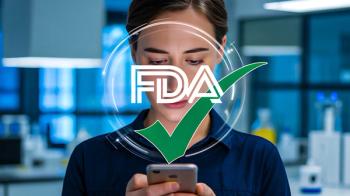
Pharmacy Practice in Focus: Health Systems
- September 2020
- Volume 9
- Issue 5
Anticoagulants, Antiretrovirals Can Prevent Strokes in AF for Patients With HIV
Conduct proper review and evaluation of ARV and DOAC pharmacokinetics and metabolism prior to recommending treatment.
The number of individuals with HIV aged 13 or older living in the United States was estimated to be more than 1.1 million at the end of 2015.1 Of that number, 162,500 (15%) had not received a diagnosis.1
The incidence of HIV has remained stable, with 50,000 new cases of HIV diagnosed each year, leading to a decreased mortality rate. The disease was responsible for 3 deaths per 100,000 individuals in 2013 compared with 17 deaths per 100,000 between 1994 and 1995.2
Significant morbidity and mortality are associated with an aging population because of cardiovascular disease, which is very common in individuals with HIV. Atrial fibrillation (AF), the most common type of cardiac arrhythmia, increases with the severity of HIV disease, with a 40% increase with a CD4 cell count of less than 200 cells per mm3 and a 70% increase with an HIV viral load greater than 100,000.3 Overall, the rate of AF in individuals with HIV per year is about 3.6.4
An estimated 2.7 to 6.1 million people in the United States had AF in 2010, and that number is expected to rise to between 5.6 and 12 million by 2050.5 More than 750,000 hospitalizations occur each year, causing an annual increase of about $6 billion in medical costs. Per-person medical costs for individuals with AF were $8705 higher than for those who did not have the condition.5
There are numerous risk factors associated with AF, including advanced age, chronic kidney disease, diabetes, European ancestry, heart failure, hypertension, hyperthyroidism, and obesity.6 Moreover, the increased risk of stroke associated with AF is 5 times more severe and causes 15% to 20% of all ischemic strokes.6
AF Trials and Efficacy End Points
Randomized trials tested the long-term use of antithrombotic agents in patients with nonvalvular AF from 1966 to 2007.7 Compared with a placebo, adjusted-dose warfarin reduced the risk of a stroke by 64%.7
With a long track record, a low cost, and rapid-turnaround genetic testing, warfarin has shown significant efficacy. Nonetheless, challenges exist, such as an increased risk of major and minor bleeds, multiple drugdrug and drug-food interactions, narrow therapeutic index, ongoing dose adjustment and laboratory testing, and unpredictable pharmacology.
Gradually, the era of direct oral anticoagulants (DOACs), such as apixaban (Eliquis), dabigatran (Pradaxa), edoxaban (Savaysa), and rivaroxaban (Xarelto), has taken the market by storm. DOACs are becoming more favored by patients and physicians.
Countless AF studies have been conducted to assess the efficacy and safety of DOACs in patients with nonvalvular AF. The open-label, randomized RE-LY trial (NCT00262600) comparing dabigatran and warfarin has shown an annual rate of stroke and systemic embolism of 1.1% and 1.7%, respectively.6 The annual rate of stroke and systemic embolism was 2.1% with rivaroxaban and 2.4% with warfarin in the ROCKET- AF trial (NCT00403767).6 ARISTOTLE (NCT00412984), comparing apixaban and warfarin, has shown an annual stroke and systemic embolism rate of 1.3% and 1.6%, respectively.6 Additionally, in the EngageAFTIMI48 trial (NCT00781391), the annual rate of the conditions was 1.6% with edoxaban and 1.8% with warfarin.6 There is major concern about the lack of ability to monitor the level of anticoagulation with the newer agents.
Patients and physicians tend to overestimate the risk of bleeding and, thus, anticoagulation in eligible patients is often withheld. According to an analysis of stroke prevention studies, approximately 25% to 30% of patients with a CHA2DS2-VASc score of 2 or higher are not on anticoagulants.8,10 Stroke prevention is vital in patients with HIV.
Pharmacokinetics
There are potential drug-drug interactions between anticoagulants and antiretrovirals (ARVs). Certain ARVs, such as non-nucleoside reverse transcriptase inhibitors (NNRTIs), the PK booster cobicistat (COBI), and protease inhibitors (PIs), have significant drug interactions with other medications. These interactions may be complex and difficult to predict.
The coadministration of some ARVs with non-ARV medications may be contraindicated or require dosage adjustment. All NNRTIs and PIs are metabolized by the hepatic CYP 450 system, particularly CYP3A4.
All PIs are CYP3A4 substrates. They are either inducers or inhibitors of other CYP isoenzymes or P-glycoprotein (P-gp). NNRTIs are substrates of CYP3A4, and can act as inducers, inhibitors, or mixed inducers.
Warfarin is metabolized in the liver by the CYP 450 enzymes, with the R enantiomer metabolized by CYP3A4, CYP1A2, and CYP2C19 and the S enantiomer by CYP2C9.9 PIs, such as atazanavir, darunavir, ritonavir, saquinavir, and tipranavir combined with ritonavir, have been shown to inhibit CYP 2C9 or 3A4. Hence, a 20% reduction in warfarin dose may be required.9
Other PIs, such as lopinavir/ritonavir, nelfinavir, and ritonavir, can induce CYP 2C9 or 3A4 and, therefore, a 50% increase in a warfarin dose may be required.9 NNRTIs, such as delavirdine, efavirenz (2C9), and etravirine (2C9), can inhibit CYP 2C9 or 3A4. Thus, patients on these NNRTIs need a 50% reduction in warfarin dose.
Other NNRTIs, such as efavirenz (3a4), etravirine (3a4), nevirapine, and rilpivirine, can induce 2C9 or 3A4, causing an increase in the warfarin dose that is required to maintain the therapeutic international normalization ratio range of 100% to 140%.9 Hence, the challenge to treat patients with HIV who are anticoagulated with warfarin for stroke prevention is convoluted.
There are interaction possibilities at the level of absorption or first transformation and at the level of metabolism and excretion. The PI ritonavir, which is a strong 3A4 inhibitor, is more likely to precipitate a clinical effect when used with certain DOACs, such as Eliquis and Xarelto, concomitantly.11
The area under the curve of dabigatran may rise as a result of the administration of P-gp. However, it may be clinically irrelevant if the administration is separated by 2 hours.11 There are no expected clinical drug interactions between dabigatran and the NNRTIs/integrase inhibitors.11
Dabigatran appears to be favorable for patients who have HIV with AF. The Department of Health & Human Services’ Guidelines for the Use of Antiretroviral Agents in Adults and Adolescents Living with HIV recommend specific adjustments if the administration of an ARV and DOAC is necessary.
A 50% Eliquis dose reduction and toxicity monitoring are required when the drug is combined with Elvitegravir/Cobicistat (EVG/c).12 The coadministration of betrixaban, dabigatran, edoxaban, and rivaroxaban and EVG/c is not recommended.12
Selecting the ARV and DOAC with a lower potential of drug interactions is the key to drug interaction management.
Conclusion
Individuals with HIV have an increased risk of AF and stroke. DOACs provide the promise of more convenient and safer anticoagulation. However, concerns arise about the lack of an antidote for some of these agents. In addition, periprocedural management remains questionable. Although guidelines recommend DOACs as alternatives to warfarin, because of increased efficacy and safety, it is important to conduct a proper review and evaluation of ARV and DOAC pharmacokinetics and metabolism prior to recommending treatment in individuals with HIV to prevent stroke in AF.
Gina Dube, PharmD, RPh, CACP, is an advanced practice clinical pharmacist at Brigham and Women’s Hospital in Boston, Massachusetts.
REFERENCES
- Dailey AF, Hoots BE, Hall HI, et al. Vital signs: human immunodeficiency virus testing and diagnosis delays — United States. MMWR Morb Mortal Wkly Rep. 2017;66(47):1300-1306. doi:10.15585/mmwr.mm6647e1
- Hall HI, An Q, Tang T, et al; Centers for Disease Control and Prevention (CDC). Prevalence of diagnosed and undiagnosed HIV infection — United States, 2008-2012. MMWR Morb Mortal Wkly Rep. 2015;64(24):657-662.
- Hsu JC, Li Y, Marcus GM, et al. Atrial fibrillation and atrial flutter in human immunodeficiency virus-infected persons: incidence, risk factors, and association with markers of HIV disease severity. J Am Coll Cardiol. 2013;61(22):2288-2295. doi:10.1016/j.jacc.2013.03.022
- Chow FC, Regan S, Feske S, Meigs JB, Grinspoon SK, Triant VA. Comparison of ischemic stroke incidence in HIV-infected and non-HIV-infected patients in a US health care system. J Acquir Immune Defic Syndr. 2012;60(4):351-358. doi:10.1097/QAI.0b013e31825c7f24
- 5. Mozaffarian D, Benjamin EJ, Go AS, et al; American Heart Association Statistics Committee and Stroke Statistics Subcommittee. Heart disease and stroke statistics—2015 update: a report from the American Heart Association. Circulation. 2015;131(4):e29-322. doi:10.1161/CIR.0000000000000152
- Ruff CT, Ansell JE, Becker RC, et al. North American Thrombosis Forum, AF Action Initiative Consensus document. Am J Med. 2016;129(suppl 5):S1-S29. doi:10.1016/j.amjmed.2016.02.001
- Hart RG, Pearce LA, Aguilar MI. Meta-analysis: antithrombotic therapy to prevent stroke in patients who have nonvalvular atrial fibrillation. Ann Intern Med. 2007;146(12):857-867. doi:10.7326/0003-4819-146-12-200706190-00007
- Johansson C, Hägg L, Johansson L, Jansson JH. Characterization of patients with atrial fibrillation not treated with oral anticoagulants. Scand J Prim Health Care. 2014;32(4):226-231. doi:10.3109/02813432.2014.984952
- Liedtke MD, Rathbun RC. Warfarin-antiretroviral interactions. Ann Pharmacother. 2009;43(2):322-328. doi:10.1345/aph.1L497
- Ogilvie IM, Newton N, Welner SA, Cowell W, Lip GYH. Underuse of oral anticoagulants in atrial fibrillation: a systematic review. Am J Med. 2010;123(7):638-645.e4. doi:10.1016/j.amjmed.2009.11.025
- Egan G, Hughes CA, Ackman ML. Drug interactions between antiplatelet or novel oral anticoagulant medications and antiretroviral medications. Ann Pharmacother. 2014;48(6):734-740. doi:10.1177/1060028014523115
- Guidelines for the use of antiretroviral agents in adults and adolescents with HIV. US Department of Health & Human Services. Updated December 18, 2019. Accessed August 17, 2020. https://aidsinfo.nih.gov/guidelines/html/1/adult-and-adolescent-arv/37/whats-new-in-the-guidelines-
Articles in this issue
about 5 years ago
Many Platforms Offer Rapid Detection in Bloodstream Infectionsabout 5 years ago
Plethora of Clinical Trials Explore Gastric Cancer Treatmentsabout 5 years ago
Consider Real Costs Before Implementing a 340B Programabout 5 years ago
LTC Pharmacists Drive Positive Clinical Outcomesabout 5 years ago
Patient Assistance Programs Are the Good, the Bad, and the Uglyabout 5 years ago
When Will a Vaccine Be Ready?Newsletter
Stay informed on drug updates, treatment guidelines, and pharmacy practice trends—subscribe to Pharmacy Times for weekly clinical insights.




















































































































































































































